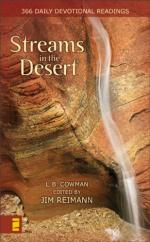|
This section contains 151 words (approx. 1 page at 300 words per page) |
Six percent of the world's land surface is desert, a biome in which less than 10 in (25 cm) of precipitation occurs per year or any place where evaporation greatly exceeds precipitation, resulting in a lack of available moisture. Sometimes any area lacking the necessary conditions to support life is called a desert. Deserts occur around latitudes 30 degrees north and south where masses of dry circulating air descend to the earth's surface. There are three kinds of deserts—hot (such as Sahara), temperate (such as the Mojave), and cold (such as the Gobi). The area of global desert is increasing yearly, as marginal lands become degraded by human misuse resulting in desertification. Deserts are potential sites for the production of electricity using banks of solar cells or parabolic solar collectors. The lack of water and remoteness of some deserts may make them attractive places to store nuclear and other hazardous wastes.
|
This section contains 151 words (approx. 1 page at 300 words per page) |


